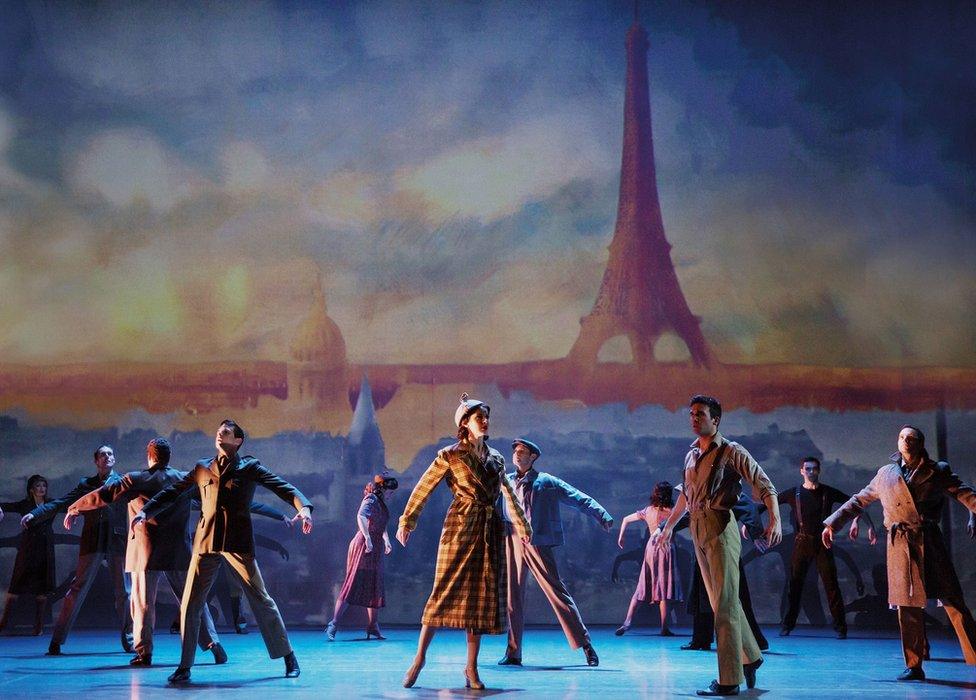An American in Paris
An American in Paris: Forgetting and remembering
When An American in Paris returned to the mainstream in 2015 with a new musical stage show, it had been over sixty years since the release of the original 1951 film, and seventy years since the year the story is set (1945). When stories and shows are revived or redone I always wonder “why now?” and “why this?” For An American in Paris it wasn’t necessarily being brought back for a particular commemorative purpose, but more because the team thought there was another way to do it, and they wanted to bring that to life. The musical features the same story and characters of the film, much of the same music by Gershwin, and all the dancing you could want. (In fact, it expands the musical and dance wealth of the story by creating new numbers.) But the change which is most curious to me is how it handles history.
The story is set in Paris in 1945, in the aftermath of the Second World War. The musical gives us our leading man Jerry Mulligan, an American GI still in his uniform, wandering the streets of Paris and eventually deciding to stay and have a fresh start. As he travels about Paris in this opening scene he encounters not just the city but its people, reuniting with loved ones, emerging from hiding, trying to find their feet after years of conflict. The film, by contrast, makes minimal reference to the War and instead offers a view of Jerry’s tranquil Bohemian artist’s life. War has been left firmly in the past, not quite as if it never happened but as if it needed to be forgotten as swiftly as possible. For a film released in 1951, that’s unsurprising; An American in Paris is a film of joy, energy, and romance. The War was a shadow to be overtaken by those uplifting forces, not to dictate the rest of their lives.
The story reflects that ethos too. The romance between Jerry and the French ballerina Lise champions the energy of a new and passionate love over the dutiful and reluctant engagement between Lise and Henri. Both on stage and on screen, Lise’s success as a dancer is tied to her emotions. She dances her best when reminded of her romance with Jerry–the joy and liberation she feels with him. That feeling produces some of the best dance sequences in the musical, where words are totally secondary to music and movement. So whilst both the film and the stage production are adamant that love wins in the wake of great tragedy, the film tries to move on as quickly as possible with this fresh start whereas the musical holds close the memory of war.
There’s something strange about how we remember the past in the immediate aftermath of an event versus remembering more distant histories. Time seemingly does heal all wounds. A musical seventy years on from the end of the Second World War probably finds it easier to process and present the fallout of war than a film released only six years after its end, where the memory has yet to emerge from initial shock.
But what does this actually do or achieve? Is it just gratuitous insertion of a major historical event for the sake of the plot? Is it doing commemorative work? As with all historical narratives, there are facts and there are narratives. The facts may be the same, but the way you tell the story is down to you. An American in Paris is no exception. History will haunt us no matter what we do with it, but how we handle its remembrance says a lot about how we seek to move forward in the world. By relegating the War to the deep background, the 1951 film throws open the doors to the future, leaving the devastation of war behind. By framing the whole narrative with the legacy of war and the complications of its waging (particularly in a French Parisian context), the 2015 musical has ghosts haunting its every step.
Whilst the dancer in me loves An American in Paris for the sheer joy of it, as with all art it requires a critical appraisal. No art is apolitical, though it may try. Every choice has an impact, and there can be different choices with different outcomes and different effects. It’s not a case of having one right way to deal with the history, it’s about being aware of the history and framing it this way or this way. Differing perspectives are a necessary part of learning and understanding, because they remind us of the ways our lives and insights can change with time. How will we reflect on our lives in six years, then in seventy years? How will we remember, and remember differently? These questions are not directly the point of An American in Paris as such, but its various iterations can certainly teach us something about our history in the world.





Comments
Post a Comment